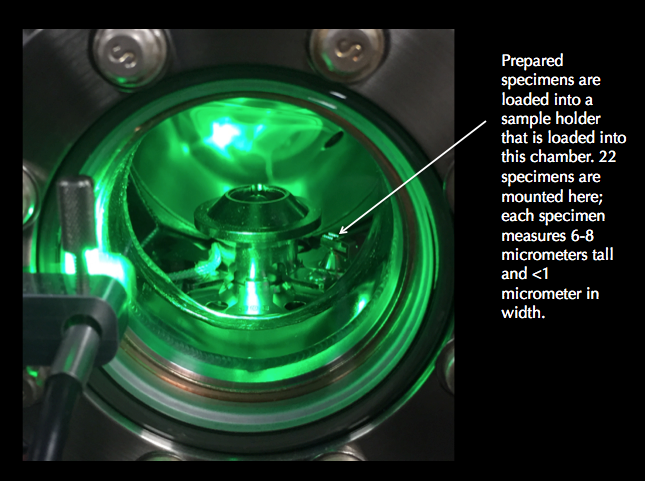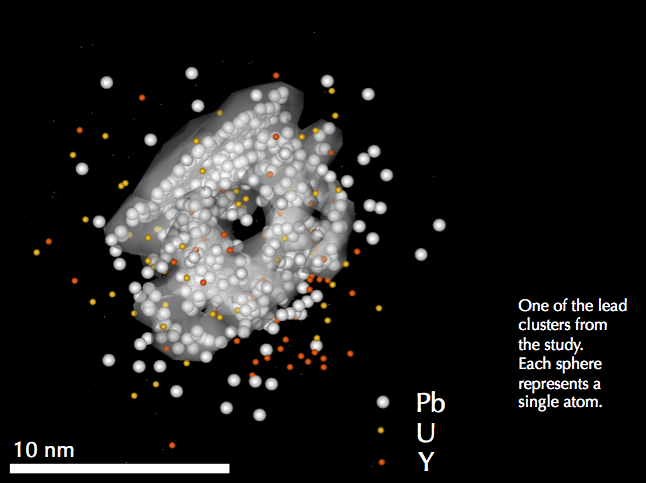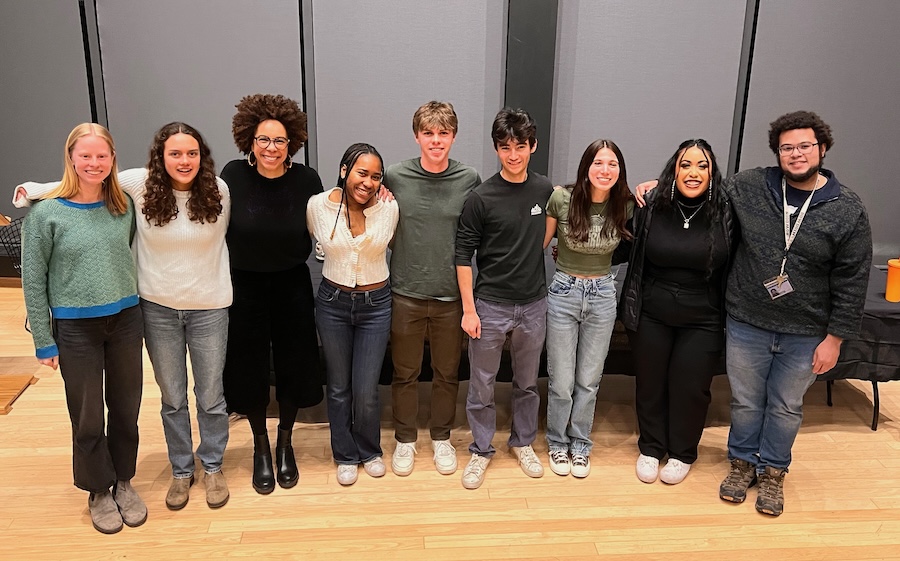Peterman Probes Nanoscale Lead Reservoirs to Date Geological Events
By Doug CookA joint research project using the new Geoscience Atom Probe Facility at Curtin University has examined lead loss in zircons to determine the timing of different geological events preserved by clusters of lead found in defects within the mineral.
With support from the National Science Foundation, Bowdoin’s Emily Peterman, assistant professor of earth and oceanographic science, traveled to Curtin University, in Perth, Australia, during her sabbatical leave to work with applied geology professor Steven Reddy and his team of researchers in the Geoscience Atom Probe Facility.
Researchers from the University of Massachusetts, Amherst and the University of California, Santa Barbara also collaborated on the project.
Using atom probe microscopy, the team looked at the nanoscale distribution of lead in a zircon grain that has undergone lead loss and showed that there were isolated lead reservoirs that could be used to date the mineral.
The structure of zircon—the most widely used mineral for dating geological events—incorporates different isotopes of uranium, which decay to different lead isotopes, which can be measured to determine the age of the mineral sample.
“This is the first study to show what lead loss looks like at the nanoscale and it opens up a whole new way of dating geological events,” said Reddy.
“The ability to obtain reproducible isotopic ratios from very small analytical volumes among several specimens demonstrates that nanogeochronology can play a critical role in understanding geologic processes,” said Peterman.
“We anticipate new applications of atom probe analysis to resolve longstanding questions in the geosciences.”
Atom probe microscopy involves analyzing tiny, needle-shaped specimens to provide a three-dimensional sub-nanometer scale reconstruction of the position and type of individual atoms in the mineral specimen.

Emily Peterman
Geologists commonly use the mineral zircon for geochronology because it incorporates isotopes of uranium that decay to lead, which we can use to measure how old the grain is. If the grain is heated or deformed, it can lose lead, which compromises the date (you can think of it like an mp3/tape/CD that has been scratched or partially corrupted).
We know that not all lead is lost during heating or deformation, but we didn’t have a mechanism to explain why any lead it would stay in the grain.
Our atom probe data shows that some of the lead is trapped in crystal defects that form as part of the zircon’s response to heating. By measuring the lead trapped in these defects, we were able to determine the age of crystallization and the timing of the heating event that caused the grain to lose lead. This heating event also caused the defects to form in the crystal that provided a trap for the lead as it was migrating from the crystal.
We were able to retrieve geologically meaningful dates for two events at the atomic scale and we were able to propose a mechanism for why lead remains in the zircon in the first place.
To continue the music metaphor, we were able to collect data at the atomic scale that provides information about the time of the recording and when the scratch/corruption occurred.
These “needles” are incredibly tiny; the scientists say the volume of material inside is about a billion times smaller than a grain of sand.
The research, “Nanogeochronology of discordant zircon measured by atom probe microscopy of Pb-enriched dislocation loops,” was published in the journal Science Advances September 2, 2016.
About the Geoscience Atom Probe Facility
The Geosciences Atom Probe is housed in the John de Laeter Centre at Curtin University.
It forms part of the National Resource Science Precinct’s (NRSP) Advanced Resource Characterisation Facility (ARCF), a joint project between CSIRO, Curtin University and The University of Western Australia, with funding support from the Science and Industry Endowment Fund.





